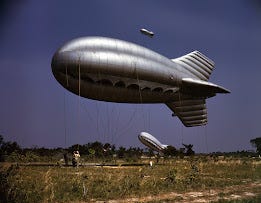The Straits of Gibraltar
“Almost exactly 5 years after I left Europe I saw its shores again today,” Opapa wrote on June 27, 1944. He was on a Liberty ship, one of the mass-produced, steam-powered cargo ships that was manufactured to transport troops and supplies during World War II.1 He was one of “about 50,” and they had departed Newport News, VA on June 11, 1944.
Opapa was relieved to be on the move. Restless at the training camp in the US, he wrote about the low morale among his comrades. But once on board, he felt again ill at ease, being en route to battle and yet idle. It was on board that he wrote the pensive, searching diary entry about being “at war,” and yet unbearably passive. He struggled with “static time,” which he called a “bastard arrangement."
Finally, after just over two weeks at sea, the Liberty ship passed through the Straits of Gibraltar. Much had changed in those 5 years, since June 1939, when he fled his homeland. He didn't write about what had happened in the meantime, but he must have been thinking about it: leaving his family; arriving in the United States; going to University; entering the military; and volunteering for the OSS.
He did, however, offer a description of the Straits of Gibraltar as he sailed through them:
"First Morocco, then Spain, then the Rock, Barrage balloons up, the ships are jockeying back & forth, going through the straits in two’s. On the Moroccan shore villages, homes, the old earmarks: walled-in villages, old forts, ruins, churches on hilltops, calvaries[?]."
The Rock is a reference to the Rock of Gibraltar,” and the “Barrage balloons” were used to shield land targets from aircraft attack. It’s helpful to decipher these words because you can start to envision the scene more accurately – how different the landscape would have looked with the massive balloons scattering the horizon, a constant reminder of the possibility of attack from the sky.
I'm not 100% positive about the final word in his entry, but I think it's “calvaries.” A calvary is “a representation of Christ’s crucifixion, usually sculptured and in the open-air.” This especially makes sense, since he had just mentioned “churches on hilltops.” So it seems that signs of both Christianity and war marked the physical surroundings of Gibraltar, as he wrote this entry about returning to Europe for the first time in 5 years.
Questions for further research:
What was the role of the OSS in North Africa?
What were “Camp X” and “Area B”?
What does OPS mean? Opapa mentioned he “manned OPS”
Further materials:
Found this handy Glossary from the National Archives for the OSS
Also, the National Archives has some helpful description of OSS history
Opapa’s personnel file from the OSS is not yet digitized
Thomas Riggs, “Liberty Ships,” in Gale Encyclopedia of U.S. Economic History, ed. Frederic Chapin et al., 2015.




